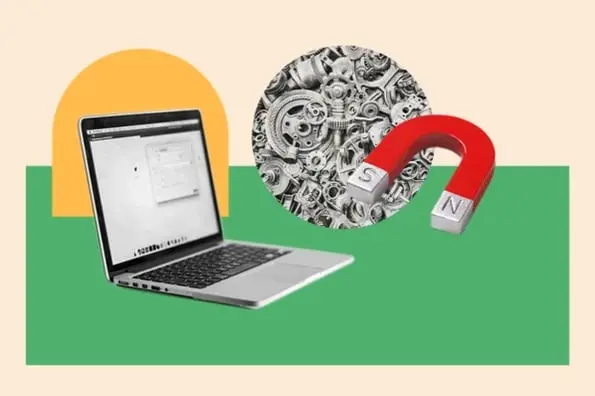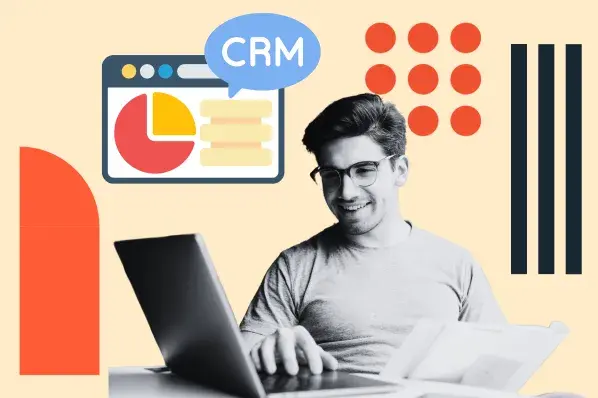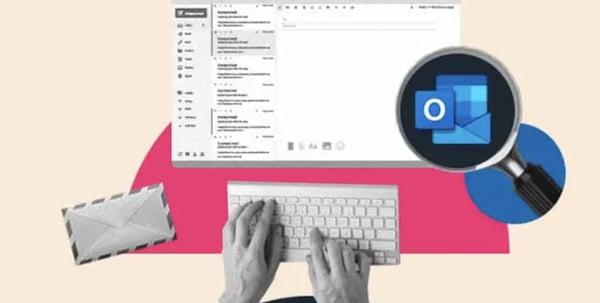Similarities Between ERP and CRM Systems
An ERP and a CRM are similar in the sense that they are both data repositories that are vital to your company's ability to manage, carry out, organize, and act on all business functions — the systems streamline these business processes. An ERP and CRM both contribute to the growth and profitability of your business.
Differences Between ERP and CRM Systems
Simply, CRMs are an effective way to improve the customer experience while ERPs improve a company’s overall health and wellbeing.
An ERP system is used to organize and manage all aspects of a business, from supply chain management to financial data and even payroll. ERPs are commonly used to help enterprise-size organizations unify their business functions and communications in order to reduce costs and increase revenue.
For example, an ERP might manage project planning, pricing configuration, and business procedures to help your teams talk to each other, reduce redundancy, and lower costs for your next product launch.
A CRM system streamlines your interactions with current and potential customers by automating repetitive tasks and sharing data among sales, marketing, and customer service.
If we look back at the same example used above for ERP, a CRM would allow salespeople to create email templates and automated workflows to send a segment of prospects an announcement for that new product.
Now let's look at some of the top ERP systems available today.
Note: If you're looking for the top CRM software, check out this post.
Top ERP Systems
Here are five examples of ERP systems you may consider.
1. NetSuite
Price: Available upon request
NetSuite boasts the ability to reduce manual and spreadsheet-based processes by up to 70%. Financials, fulfillment, inventory, and sales are a few of the business areas you can manage efficiently using this system. Real-time scorecards make tracking daily cash flow easy. And anytime-access means you can monitor your business from anywhere, 24-hours a day.
2. SAP Business ByDesign
Price: Base package, $1,673/ mo; Self-service user, $17/ user/ mo; Team user, $88/ user/ mo; Enterprise user, $148 /user /mo
Financial and managerial accounting, cash flow management, CRM, human resources, and project management are just a few of the business areas SAP promises to streamline. Geared toward mid-market businesses with skyrocketing growth, SAP is a premium solution for scaling your business "without the complexity.”
3. Microsoft Dynamics 365
Price: Unified Operations Plan, $190/ user/ mo; Dynamics 365 Plan, $210/ user/ mo
Microsoft’s ERP allows you to optimize any type of manufacturing and the parameters for each product. It also allows you to streamline scheduling, accelerate product delivery, and improve product quality using real-time insights and predictive intelligence.
4. Odoo ERP Self Hosted
Price: $20/ user/ mo base price; Additional app pricing varies
Odoo is an open source ERP — meaning, the code is available to anyone — which allows developers anywhere to modify or improve it. Odoo has had thousands of developers work on its apps. It’s user-friendly and allows customers to build ecommerce websites, manage projects and timesheets, run inventory, and more.
When it comes to your business, it's safe to say ERP and CRM systems are useful for a wide variety of reasons. That's why combining the two systems, or integrating them, can be even more powerful. Let's talk about ERP and CRM integration next.
ERP and CRM Integration
Traditionally, ERP and CRM have remained separate solutions. But, integrating your CRM and ERP can streamline business processes in lucrative ways.
For instance, by allowing salespeople in the front office to send orders directly to the fulfillment office, or facilitating your finance department to see the revenue coming into your pipeline in real-time, you can remove friction in your business and create a better end-to-end experience for customers.
Additionally, the two systems have data that's critical to your business's growth and success. So rather than having two entirely separate record-keeping and operating systems for this data, keep them in sync in order to have one, single source of truth when it comes to that data.
To give you a better idea of what ERP and CRM integration services might look like, here are two examples.
ERP and CRM Integrations Examples
There are a number of ERP and CRM integrations today — here are two examples to help get you started.
1. HubSpot and Odoo Integration
Price: Starter, $39/ mo; Pro, $49/ mo
The HubSpot all-in-one CRMi ntegrates with Odoo ERP so you can set up a real-time, bi-directional sync between your HubSpot CRM and the ERP tool in minutes.
With this integration, you can:
- Sync your Odoo contacts to HubSpot, HubSpot customers to Odoo, or both.
- Use HubSpot's contact fields, lists, and smart lists, or Odoo's default and custom attributes, to filter contacts.
- Save time and maintain data accuracy with preset field mappings to Odoo’s data objects.
- Link HubSpot’s properties to fields in Odoo with custom field mappings.
- Stay up to speed on the health of your data syncs and how each platform is contributing to your bottom line by tracking Odoo connector performance when it comes to your net new contacts between both platforms .
- Detect failing contacts so you can align your data.
2. Commercient
Price: Check out the pricing page for the tool you're integrating.
Commercient offers SYNC apps that work as ERP integrations for CRMs. They require no code, mapping, server, or ETL. Commercient can help you get integrated quickly so all of your account data, orders, payment records, and more are synced.
Here are some more benefits of using Commercient:
- Download your Commercient SYNC app and quickly gain access to all of your sales, marketing, and customer service data wherever you need it.
- Set up data syncs between your ERP and CRM as often as you'd like (daily, hourly, or real-time).
- Use integration apps for a variety of tools such as HubSpot, Dynamics 365, and Salesforce.
- Keep your data safe and make internal team access to data simple because Commercient is cloud-based.
- Choose to 1) integrate your ERP data with your CRM system, 2) integrate your CRM data with your ERP system, or 3) use a two-way sync to integrate both ERP and CRM data so everything is in one location.
Lastly, let's review a few more high-level benefits you'll get from integrating your ERP and CRM no matter which integration you select.
High-Level Benefits of ERP and CRM Integration
Here are three major benefits you'll get out of using an ERP and CRM integration.
1. Get accurate quotes.
Never worry about your reps quoting a price or quantity your business or warehouse can’t support. By integrating your CRM and ERP, reps can communicate with, and have visibility into, your company’s inventory and costs.
2. Reduce duplication and increase knowledge sharing.
Have trouble with your sales team duplicating reports finance has already created? Kiss redundant information goodbye and welcome a little more time and a lot more collaboration into your employees' workflows.
3. Improve forecasting.
Speaking of sales, make sure your sales reps can access vital financial information stored in your ERP while they’re forecasting. Integrating your ERP and CRM can lead to more accurate planning.
Integrate Your ERP and CRM
Begin by choosing your ERP and CRM, and then the integration that's going to connect the two. This way, you'll be able to streamline businesses processes, increase productivity, and keep all of your business's data in a centralized database to increase productivity, efficiency, conversions, and more.
Editor's note: This post was originally published in August, 2019 and has been updated for comprehensiveness.












